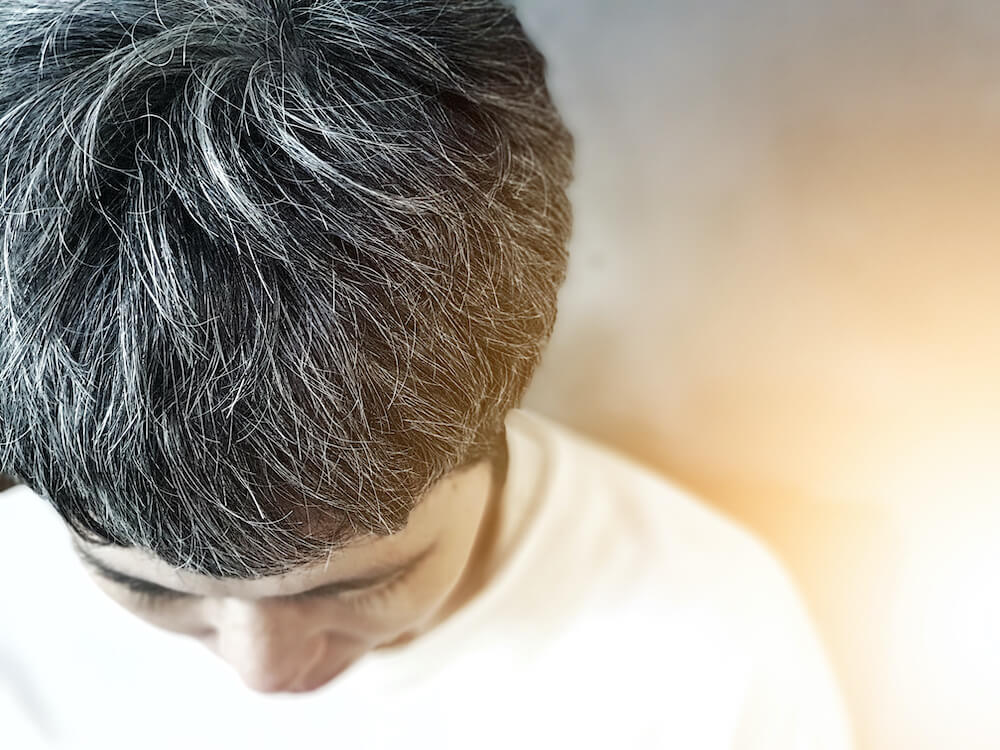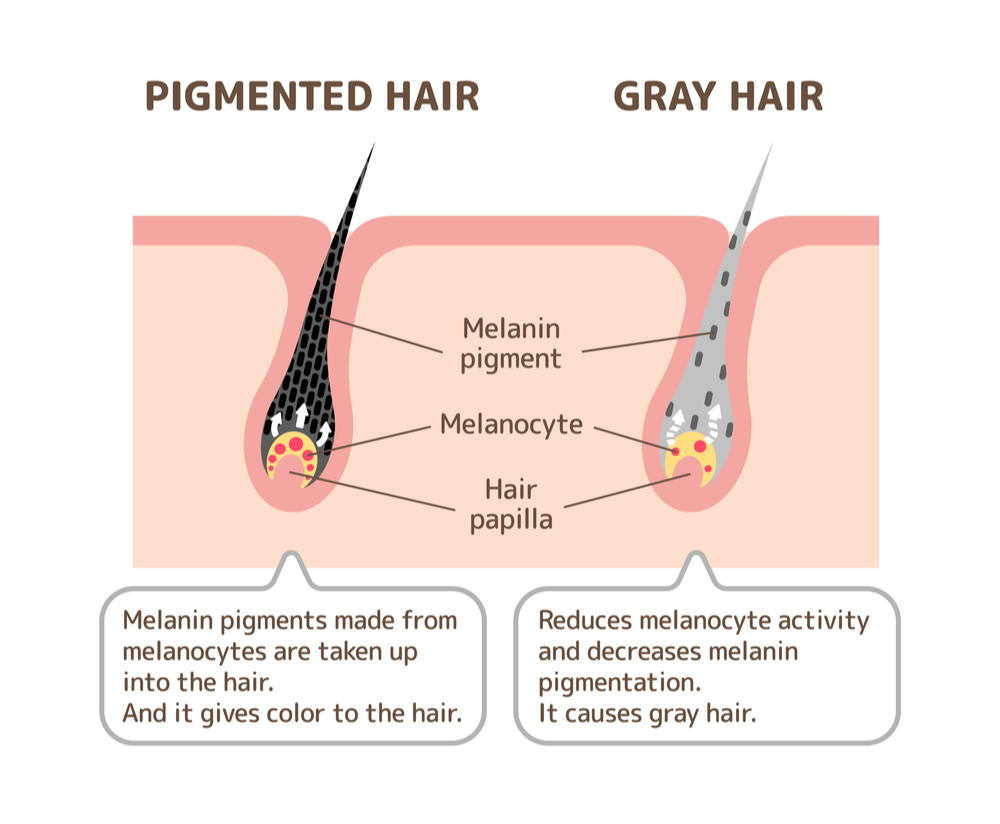Understanding gray hair
Let’s face it: if you don’t have it already, you’ll most probably have it someday. Take a look at why gray hair happens, what causes it, and how our views on it evolved.

Gray hair’s anatomy
It can happen at almost any point in your life: in your mid-20s or nearer to your 50s. A few of us are lucky to have our hair preserve its color until the 70s or even later—but eventually, your hair will turn gray.
You can be blond, red, black, or have any other hair color: the underlying reason is the same. Your hair turns gray when hair shafts lose its pigment: melanin. Melanin is a natural polymer—that is, a complex protein molecule. There are special cells that make it: melanocytes, also connected to our immune system. There is a theory that hair graying can be postponed or even reversed by making the body create new melanocytes from stem cells. Still, the research on this experimental treatment has started only recently.

Gray hair is different not only in terms of appearance but also in texture and overall feel. Stylists and beauticians often describe gray hair as less manageable: it is noticeably more coarse, thin, and brittle than pigmented.
Some of us wear it proudly, and some opt to hide it: the public opinion on whether we should dye gray hair has varied across cultures and history. The age when the hair starts graying is dependent on genetics: thus, scientists have observed different patterns between people of different ancestry. In other words, Europeans generally tend to get gray hair at a different age than, for example, Africans.
We’ll get to it soon—but first, let’s look at the biology of this mechanism.
What happens when our hair turns gray?
Generally speaking, your hair primarily loses melanin due to a combination of genetics and natural factors related to aging.
However, that said, particular lifestyle choices affect your body’s biological processes—and in turn, accelerate the appearance of gray hairs.
Probably, the most notable of the lifestyle factors is smoking. Caffeine and alcohol have not been proven to affect hair graying directly: but bear in mind, overuse of either can lead to dehydration and increased levels of stress hormones, which do seem to make you lose melanin faster. Smoking has a drastic effect on our integumentary system—the body’s outermost layer that includes the skin, nails, and hair. Countless studies have already highlighted the link between smoking and skin cancer; however, according to other targeted studies, it also directly harms nails and hair.
There have been many studies of premature hair graying, especially in young men under 30, which proved that nicotine causes both hair loss and graying.
Unlike smoking, the data that connect hair graying to diet is not as conclusive. Still, several studies produced favorable results: it was found that lack of calcium, vitamin D-3, and ferritin seems to accelerate graying.

As for the stress-related studies, some have been carried out with mice. Researchers suggest a strong candidate for the culprit behind stress-related hair graying. It is norepinephrine (also called noradrenaline), a chemical produced as a stress response. This hormone activates stem cells, prematurely turning them into pigment-producing melanocytes and depleting the reserve—so, in the long run, we have fewer of them.
Gray hair in culture: from shaming to trending
As we’ve said, there are different patterns of hair graying across different parts of the world and ancestries. Thus, Asians commonly start growing gray hairs in their late 30s, whereas Europeans often begin graying a bit earlier, in their mid-30s. Africans notably break away from this age range—their hair usually retains the color until their mid-40s.
Many cultures and societies across history have put pressure on people’s (especially women’s) looks by means of fashion and beauty standards: hair color is no exception. Nowadays, many people still feel compelled to dye their hair in order to avoid “gray shaming.”
Hair dye may seem like a relatively modern invention, but it traces back to as early as 300 BCE when women used flower pollen to give their hair a lighter hue. The Trotula (a set of texts on women’s medicine composed in the 12th century) recommended a method of hair darkening using apples, vinegar, and a cooked green lizard.
